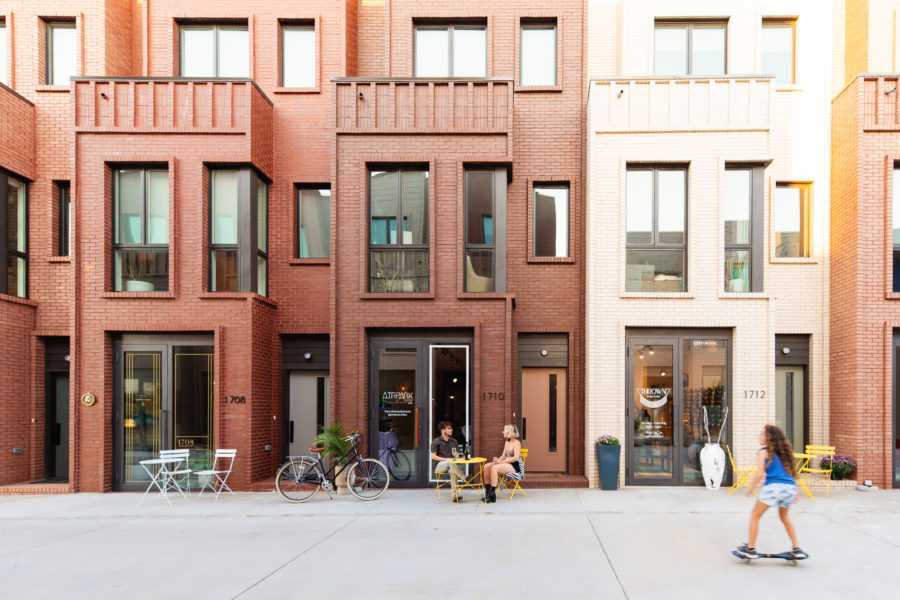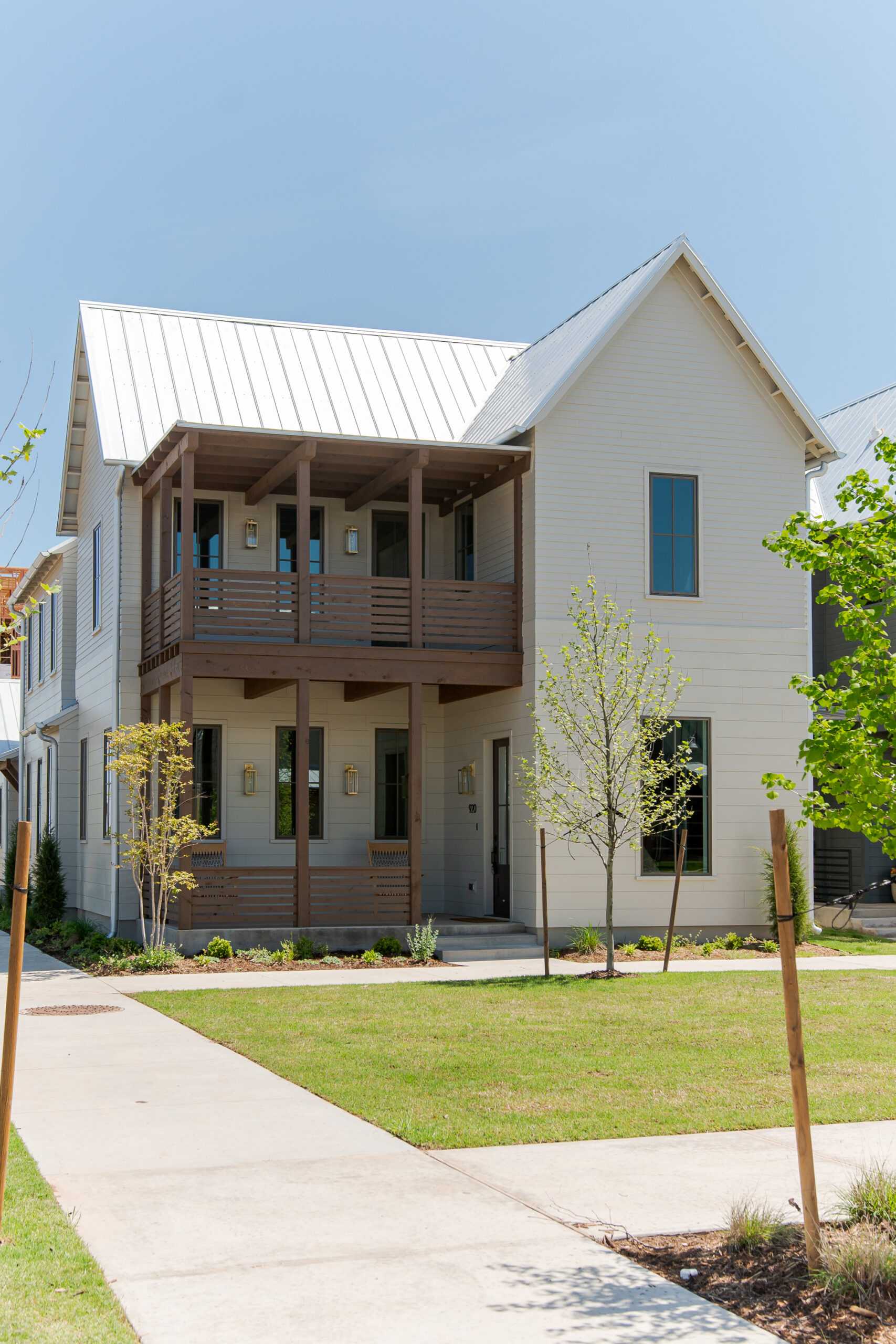A walkable, bikeable, connected community. In the city, on the river, made for people.
This statement may seem like merely a slogan, but for the creators of the Wheeler District, the above phrase represents their beliefs, their mission, and their vision for the project and what impact it will have on surrounding Oklahoma City communities.
Intentionally Designed
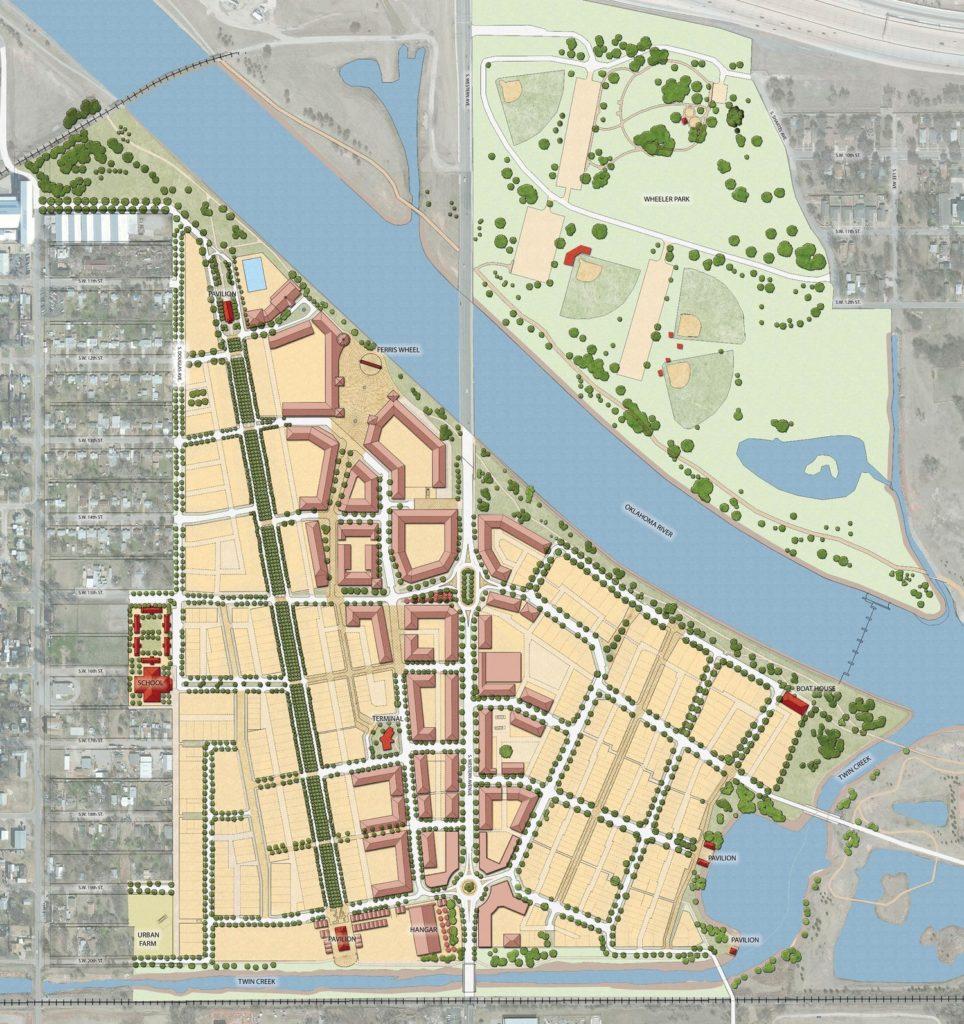
From the beginning, the founders of Wheeler District wanted to involve the broader community in the project. The 2014 city-wide charrette invited the public to dream. And the people delivered. Generated from 1,000+ voices of the community was a master plan illustrating a neighborhood that would be built for walkability – built for community.
Walkable
This term “walkable” is commonly used to describe the mixed-use district, but what does it take for a place to be considered “walkable”? Theoretically, can’t any neighborhood be described this way? Is Wheeler District “walkable” because of all the sidewalks? – lots of neighborhoods have sidewalks.
Not exactly. Walkability refers not only to the space residents have to walk, the accessibility to walkways, or the number of crosswalks on a street, but it also takes into consideration how the environment encourages walking.
According to Professor of Behavioral Sciences, Brian E. Saelens, there are several factors that contribute to one’s decision towards active transport (walking). These include higher residential density, increased land-use mix, higher street connectivity, greater infrastructure and safety for walking, favorable aesthetics, lower traffic hazards, absence of physical barriers, and frequent social interaction.
Bikeable
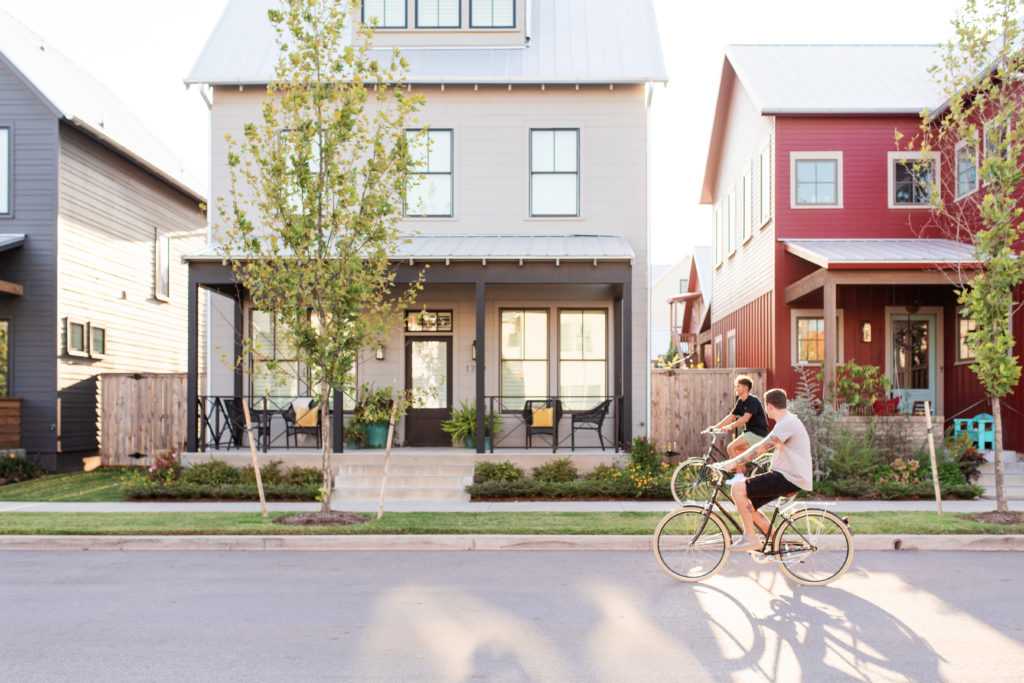
The terms walkability and bikeability are often used together in regards to developing communities, but – for the community of Wheeler District – bikeability means a little more.
Wheeler District hosts the Wheeler Criterium – a community-wide cycling event – every year in the spring and fall. Although the event was established before the streets of the residential development were paved, bringing racers to the district has been a part of the Wheeler District vision since the beginning.
“When we were getting into the nitty gritty of street design, we invited Chad Hodges out to help look at the design. He provided suggestions to keep cyclists safe, ensuring the curbs and corners were constructed at proper angles, and the street materials were cycling-friendly,” notes Vice President of Development, Ashley Terry in a recent VeloCity article.
Connected
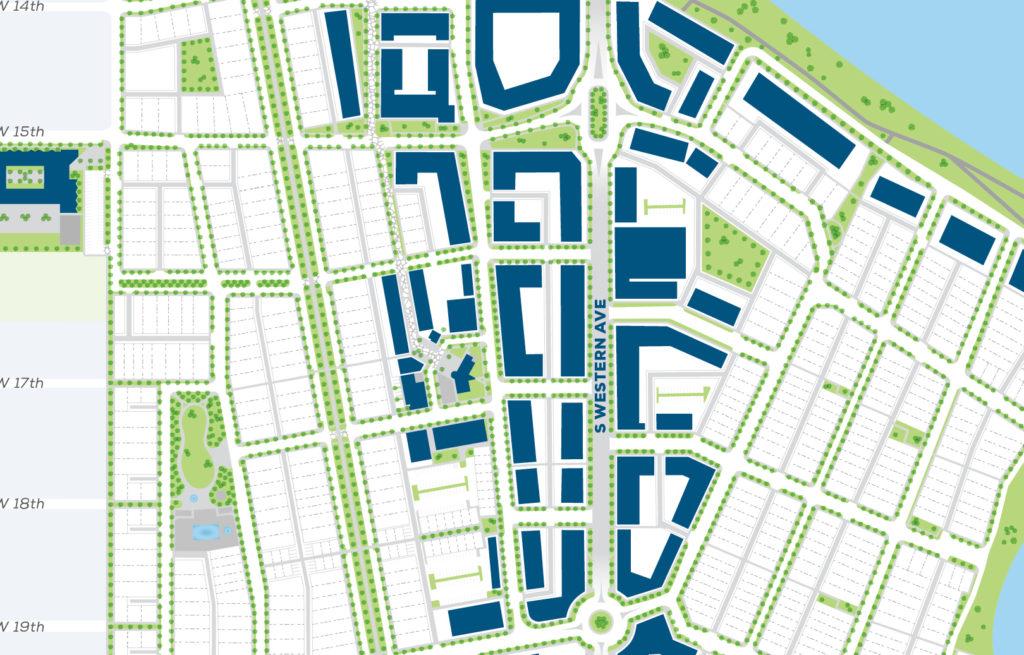
What does a connected community look like? How does the environment strengthen a community’s connection?
Consider a city whose land use is separated into sections: a place for businesses, a place for housing, and a place for recreation. This leaves each area disconnected, and oftentimes physically distant, from the others. A person living in this type of community requires a vehicle for daily living and doesn’t see a need to leave home on foot. This is what current-day low-density sprawl has created.
The vision of Wheeler District is to reconnect communities. Intentionally designed as a high-density, walkable community, the development utilizes mixed-use property and shared spaces and joins them by streets which encourage active-transport while connecting all neighborhood amenities.
In the City
The district’s proximity to Oklahoma City’s dynamic core benefits the homeowners and business owners of the district by providing access to and from amenities of downtown. The district’s connection also creates a unique opportunity for the design to be a gateway between two existing communities of OKC – separated by vacant property for years.
The growing community was also created to enhance Oklahoma City’s dynamic core.
On the River
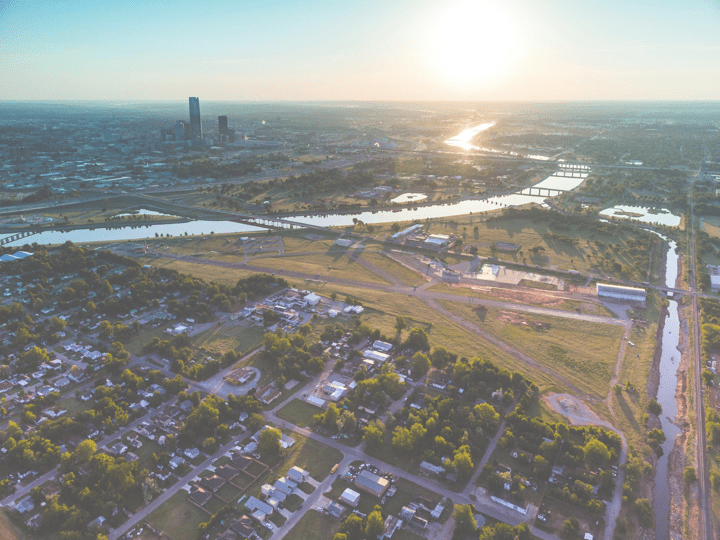
Wheeler District is unique in location not only because of the proximity to downtown or the revitalization of an abandoned airpark, but also because the 150 acres sits on the bank of the Oklahoma River.
This opens opportunity for riverfront development in favor of the community – a feat already successfully begun by the erection of the famous Wheeler District Ferris wheel on the north end of the district.
The bikeable Oklahoma River Trail network connects to Wheeler District, opening a variety of opportunities for travel, commuting and enjoyment of our city’s parks and waterfronts, and recreational locations.
Made for People
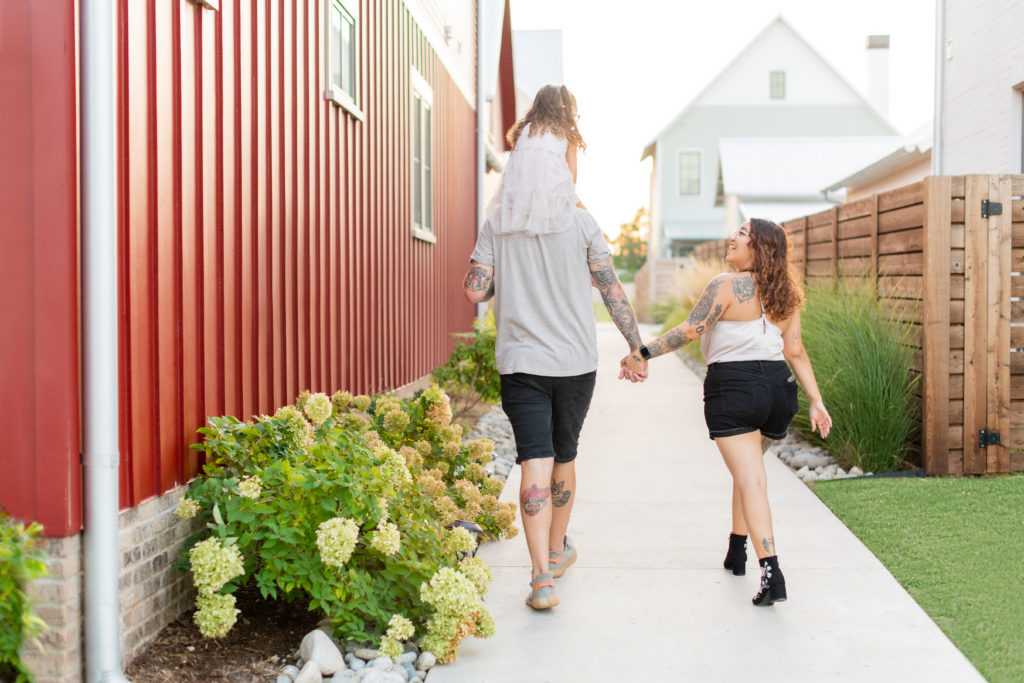
Wheeler District developers aimed to create every space for people – every space in human-scale. The term human-scale refers to a method used in drawing, “scaling”, when true size is made smaller to better illustrate a design on paper.
Wide sidewalks, narrow streets, expansive front porches, terraces, pedestrian streets, parks, patios and shareable spaces, a community mailroom.
Each of these contributes to the people-centered design for homeowners, businesses and district visitors in Wheeler District. Each encourages time spent outdoors and around neighbors. Walking the streets of Wheeler District on any given evening will prove the efforts successful.
